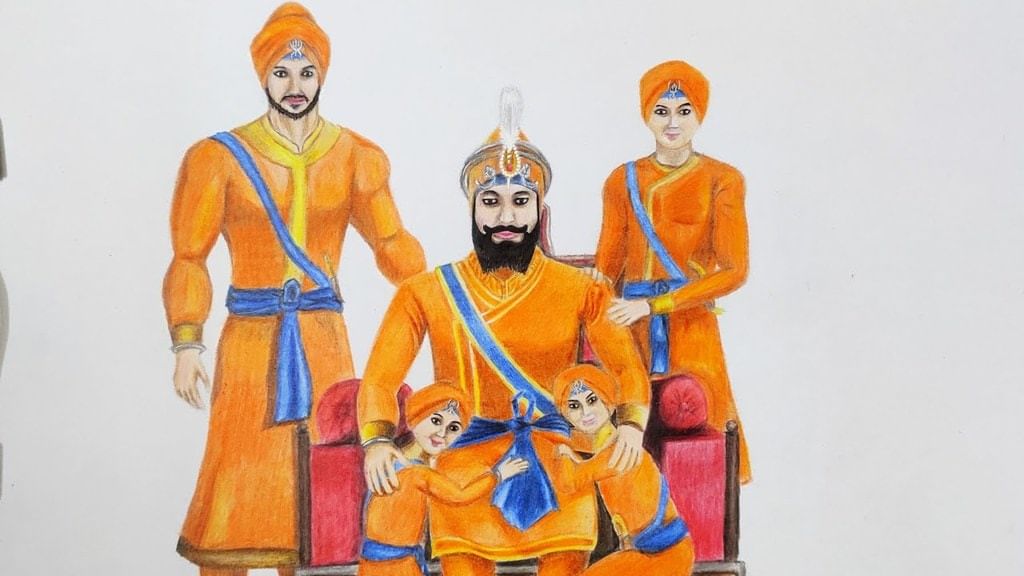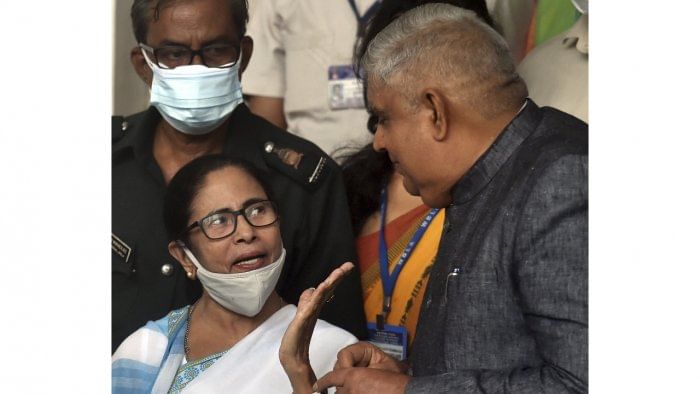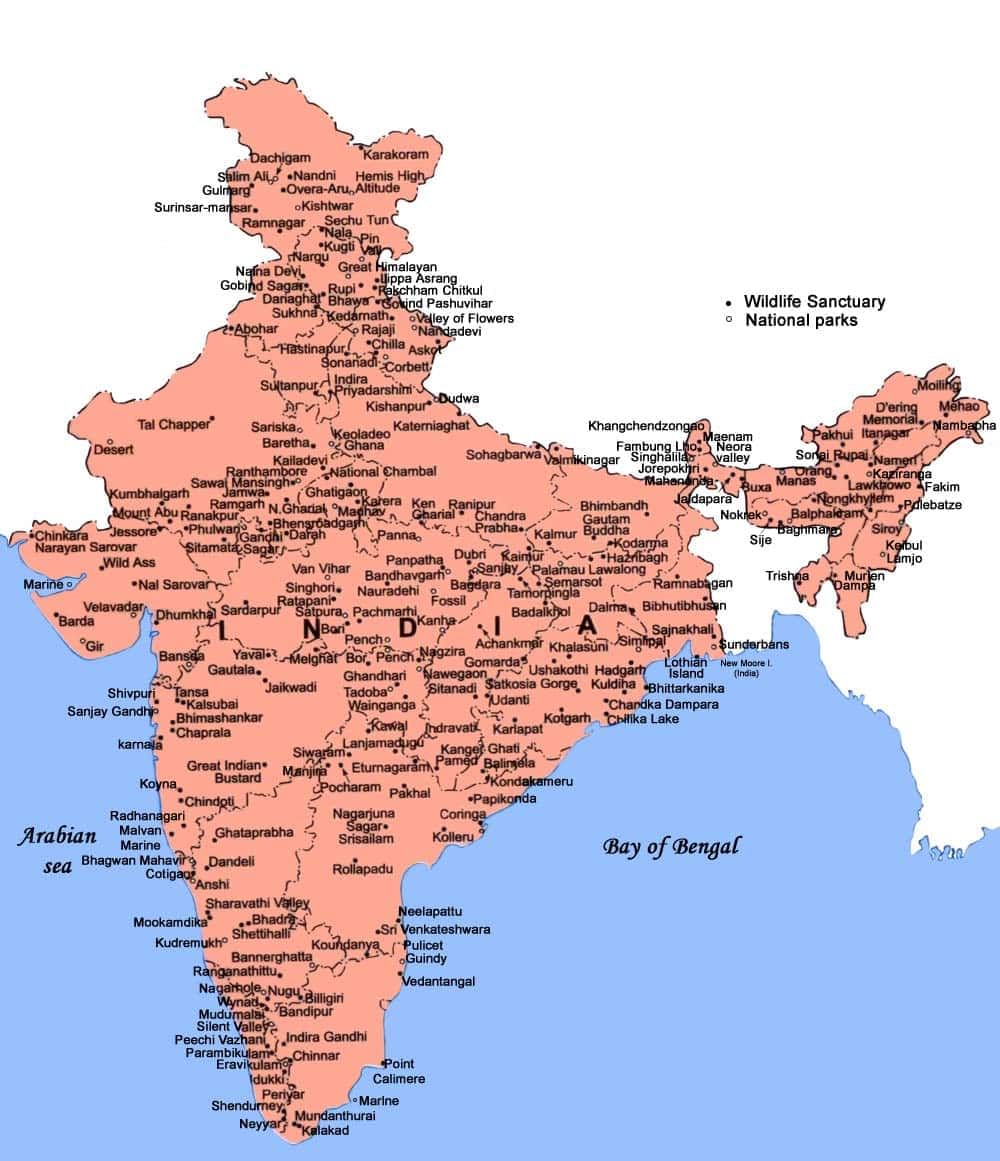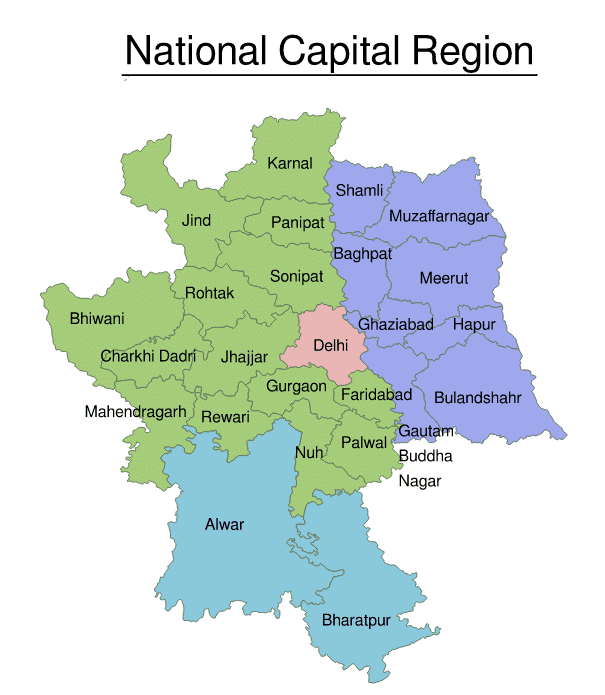UPSC Daily Current Affairs- January 10, 2022 | Current Affairs: Daily, Weekly & Monthly - CLAT PDF Download
GS-I
Veer Baal Diwas

Context
- The Union Home Ministry announced that December 26 would be observed as 'Veer Baal Diwas' as a tribute to the 10th Sikh guru Gobind Singh's four sons who were executed by the Mughals.
- It was announced on the occasion of the 365th birth anniversary of the 10th Sikh guru.
About Veer Baal Diwas
- Veer Baal Diwas will be on the same day Sahibzada Zorawar Singh Ji and Sahibzada Fateh Singh Ji attained martyrdom after being sealed alive in a wall on December 26, 1705, at the tender age of 9 and 6 years respectively to defend the dignity and honour of Sikhism.
- These two greats preferred death instead of deviating from the noble principles of Dharma.
About Guru Gobind Singh
- Original name Gobind Rai, (born 1666, Patna, Bihar).
- He was the son of the ninth Guru, Tegh Bahadur, who suffered martyrdom at the hands of the Mughal emperor Aurangzeb for refusing to convert to Islam.
- He was the tenth Sikh Guru, a spiritual leader, warrior, poet and philosopher.
- He led the Sikh community through his teachings and philosophy and soon gained historical importance.
- He was responsible for institutionalising the Khalsa, who played a significant role in protecting the Sikhs after his death.
- He was the reputed author of the Sikh work called the Dasam Granth (“Tenth Volume”).
- He declared Guru Granth Sahib as Sikhism's holy scripture in 1708, before his death.
Punishing Online Abusers of Women

Context
- Taking cognizance of multiple complaints that photographs of women had been posted on a mobile app (with a very informal slang name) for fake auctions, the police in Delhi and Mumbai have registered cases.
About Online Abuse of Women
- Online abuse includes a diversity of tactics and malicious behaviors ranging from:
- Sharing embarrassing and cruel content about a person to impersonation
- Stalking and electronic surveillance
- Nonconsensual use of photography
- Violent threats and hate speech
- Defamation
- Flaming- use of vitriolic and hostile messages including threats, insults
- Trolling
- The online harassment of women, sometimes called Cybersexism or cybermisogyny, is specifically gendered abuse targeted at women and girls online.
- It incorporates sexism, racism and religious prejudice.
Recent controversy: A critical case of abuse
- The app is clearly an example of online trolling where the dignity and modesty of a woman is highly downgraded.
- This has not been the very first time. Earlier, no arrests were ever made showing Police inaction.
- The authorities were using the Mutual Legal Assistance Treaty (MLAT) to obtain information about the creators of such apps from California-based GitHub.
What is the controversy?
- Hundreds of women in India including journalists, social workers, and other prominent personalities found their images and derogatory content about them on a new app.
- The app was created on hosting platform Github, offered an online “auction” of women (esp from a particular community).
- This controversy is part of the routine harassment women faced on social media in an increasingly polarized communal environment.
Legal provisions against such Crimes
- For making arrests, the police have invoked Sections 153A, 153B, 295A, 354D, 500 and 509 of the Indian Penal Code (IPC) and Section 67 of the Information Technology Act.
- Section 153A pertains to the offence of promoting enmity between different groups on grounds of religion, etc., and doing acts prejudicial to the maintenance of harmony.
- Section 153B relates to imputations, assertions prejudicial to national-integration.
- Section 295A provides punishment for deliberate and malicious acts intended to outrage religious feelings.
- Section 354D provides that any man who monitors the use by a woman of the internet, email or any other form of electronic communication with malintent, commits the offence of stalking.
- Section 500 defines the punishment for defamation.
- Section 509 addresses the offence of word, gesture or act intended insulting the modesty of a woman.
- Section 67 of the IT Act lays down the punishment for publishing or transmitting obscene material in electronic form.
Penalty for such crime
- The first conviction attracts imprisonment up to three years and fine up to ₹5 lakh and the second or subsequent conviction may lead to imprisonment up to five years and fine that may extend to ₹10 lakh.
What are the responsibilities of intermediaries like social media platforms?
- As of now, the intermediaries are not liable for any third-party data or communication link hosted or stored by them.
- They are required to retain the requisite data for duration as prescribed by the Government and supply the same to the authorities concerned, as and when sought.
- Any contravention attracts punishment as prescribed under the IT Act.
Additional steps have been taken
- The Ministry of Electronics and Information Technology notified the Information Technology (Intermediary Guidelines and Digital Media Ethics Code) Rules, 2021.
- Its provision —“Due diligence by intermediaries and grievance redressal mechanism” —requires them to inform their users not to host, display, upload, modify, publish, transmit, store, update or share any illegal information.
- They include contents that are defamatory, obscene, pornographic, paedophilic, invasive of another’s privacy, insulting or harassing on the basis of gender, libellous, racially or ethnically objectionable, etc.
- The intermediaries, on the direction of the court or appropriate government agency, are prohibited from hosting, storing or publishing any information declared unlawful.
- Within 24 hours from the receipt of a complaint from, or on behalf of, an individual about any offensive content, they are required to take all reasonable and practicable measures to remove or disable access to it.
Conclusion
- Gender-based harassment is marked by the intent of the harasser to denigrate the target on the basis of sex.
- But this proliferation of online harassment of women has now incorporated religious polarization.
- This is very harmful for the existing communal harmony of the nation in the long run.
Jallikattu

Context
- With a steep rise in the daily cases of COVID-19, the district administration in Vellore, Tiruvannamalai, Ranipet and Tirupattur, have banned the conduct of Jallikattu events, ahead of Pongal festival, as part of safety measures.
About the festival
- Location: Jallikattu is typically practiced in the Indian state of Tamil Nadu as a part of Pongal celebrations on Mattu Pongal day, which occurs annually in January.
- History: Jallikattu has been known to be practiced during the Tamil classical period (400-100 BCE).cIt was common among the Ayar people who lived in the ‘Mullai’ geographical division of ancient Tamil Nadu.
- Bull-taming sport: Jallikattu is a bull-taming sport. The festival is a celebration of nature, and thanksgiving for a bountiful harvest, of which cattle-worship is part.
- It is a violent sport: and there is only one winner, man or bull.
- Traditional event: in which a bull such as the Pulikulam or Kangayam breeds is released into a crowd of people, and multiple human participants attempt to grab the large hump on the bull's back with both arms and hang on to it while the bull attempts to escape.
- Participants hold the hump for as long as possible, attempting to bring the bull to a stop.
- In some cases, participants must ride long enough to remove flags on the bull's horns.
About Issue
- Cruelty to animals: The practice of Jallikattu has long been contested, with animal rights groups and the courts concerned over issues of cruelty to animals and the bloody and dangerous nature of the sport that causes death and injuries to both the bulls and human participants.
About Significance
- Culture: It is about showcasing the quality of cattle, the breeding skills of cattle rearers, the centrality of cattle in an agrarian economy, and the power and pride they bring to farmers and land-owning castes in rural Tamil Nadu.
- Article 29(1): Governments at the state and Centre have wrestled with formulating a regulatory mechanism for Jallikattu, and a matter relating to whether Tamil Nadu can conserve it as a cultural right under Article 29(1) of the Constitution.
- Any section of the citizens residing in the territory of India or any part thereof having a distinct language, script or culture of its own shall have the right to conserve the same.
- Vaadivaasal: Perhaps the best guide to the cultural universe of Jallikattu is C S Chellappa’s brilliant novell, ‘Vaadivaasal’ (Arena), a slim volume written in the 1940s, with a handful of male characters and bulls.
GS-II
Inner Line Permit System (ILPS)

Context
- A petition has been filed in the Supreme Court opposing the implementation of the Inner Line Permit System (ILPS) in Manipur.
About Inner Line Permit
- A concept drawn by colonial rulers, the Inner Line separated the tribal-populated hill areas in the Northeast from the plains.
- The concept originates from the Bengal Eastern Frontier Regulation Act (BEFR), 1873.
- To enter and stay for any period in these areas, Indian citizens from other areas need an Inner Line Permit (ILP).
- Arunachal Pradesh, Nagaland and Mizoram are protected by the Inner Line, and lately, Manipur was added (in December last year).
Its’ Inception
- The policy of exclusion first came about as a response to the reckless expansion of British entrepreneurs into new lands which threatened British political relations with the hill tribes.
- The BEFR prohibits an outsider’s — “British subject or foreign citizen” — entry into the are beyond the Inner Line without a pass and his purchase of land there.
- On the other hand, the Inner Line also protects the commercial interests of the British from the tribal communities. After Independence, the Indian government replaced “British subjects” with “Citizen of India”.
- Today, the main aim of the ILP system is to prevent settlement of other Indian nationals in the States where the ILP regime is prevalent, in order to protect the indigenous/tribal population.
Why need ILP?
- Despite the fact that the ILP was originally created by the British to safeguard their commercial interests, it continues to be used in India.
- It aims to protect tribal cultures in northeastern India. There are different kinds of ILP’s, one for tourists and others for people who intend to stay for long-term periods, often for employment purposes.
- ILP’s valid for tourism purposes are granted as a matter of routine.
Issues with ILP
- It has been extensively used to restrict the entry of tribals.
Confrontation between the Governors and the State governments

Context
- Recent media reports about the confrontation between the Governors and the State governments, in Maharashtra and Kerala, have turned the spotlight on the rather delicate relationship between the constitutional head of the State and the elected government.
Recent incidents of confrontation
- In Maharashtra, the Governor refused to accept the date of election of the Speaker recommended by the State government.
- The Constitution has not assigned any role to the Governor in the election of the Speaker under Article 178, which is exclusively the job of the House.
- The Governor’s refusal to accept the date of election of the Speaker goes against the principles of constitutional government.
- In Kerala, the State Governor having reappointed the Vice-Chancellor of Kannur University in accordance with the law, made an allegation that he was under pressure from the Government to reappoint the Vice-Chancellor.
- In fact, he or she can accept suggestions from any person including the Leader of the Opposition in the Assembly.
- However, the Governor as Chancellor is not required to act on the advice of the Council of Ministers in the matter of appointment of Vice-Chancellor and others in the university.
- He can act absolutely independently.
- Non-acceptance of the advice of the Council of Ministers too has been witnessed in Rajasthan as well as Maharashtra again. The Kerala High Court has clarified this legal point in Gopalakrishnan vs Chancellor, University of Kerala.
What explains the confrontational relationship between Governor and State Government?
- Historical background: It has something to do with the whole idea of the office of the Governor and its past history.
- In the colonial era, the Governor was the absolute ruler of the province.
- While making the Constitution, there were divergent views on the powers to be given to the Governor in the Constituent Assembly.
- There were members in the Assembly who wanted the Governor to be as powerful as the colonial-era Governors.
- Discretionary powers: Though B.R. Ambedkar was clear that the Governor should only be a constitutional head and the executive power should vest entirely in the elected government.
- He promoted the idea of vesting certain discretionary powers in the Governor.
- Why discretionary powers? In this respect he was guided by the thinking that the State governments are in subordination to the Union government and, therefore, the Governor should be given discretionary powers to ensure that they act so.
- So, ultimately, the Governor is given certain discretionary powers prescribed by or under the Constitution unlike the President of India who has not been given any such powers.
- Vagueness about actual powers: Further, Article 163 became a ‘blind reproduction of Section 50 of the Government of India Act 1935’ (H.V. Kamath).
- This exact reproduction of the provision in the Act of 1935 has, to a great extent, introduced a vagueness about the actual powers of the Governor vis-à-vis the elected government.
- This vagueness was corrected only with the Supreme Court of India stating the law in unambiguous terms in Shamsher Singh (1974).
- From Shamsher Singh to Nabam Rebia (2016) the Supreme Court declared that the Governor can, in the exercise of executive power of the state, act only on the aid and advice of the Council of Ministers “…save in a few well-known exceptional situations”.
Conclusion
- The Governor is a high constitutional authority. He needs to function within the four walls of the Constitution and be a friend, philosopher and guide to his government.
GS-III
Orang National Park

Context
- Recently, the government has issued a notification to make Orang National Park more than thrice its existing size.
- The gharial, wiped out from the Brahmaputra River system in the 1950s, could be the prime beneficiary of a process to expand an Assam tiger reserve.
About Orang National park
- It is located on the north bank of the Brahmaputra River in the Darrang and Sonitpur districts of Assam, India.
- It was established as a sanctuary in 1985 and declared a National Park on 13 April 1999.
- It is also known as the mini Kaziranga National Park (IUCN site) since the two parks have a similar landscape made up of marshes, streams and grasslands and are inhabited by the Great Indian One-Horned Rhinoceros.
Zebrafish study reveals how the brain makes its connections

Context
- Recent work by researchers at the National Centre of Biological Sciences, Bengaluru, has thrown light on what stimulates the synapses (connection of nerve cells) to form.
What are Synapses?
- Neurons, or nerve cells, in the brain connect by means of junctions known as synapses through which they transmit signals.
- There are two types of synapses – chemical and electrical:
- Chemical Synapse
- In this, there is a space of about 20 nanometres between two neurons, and the way they communicate is this: One neuron converts electrical signal into chemical signals.
- This chemical is released into the synaptic space and the receiving neuron converts the chemical signal back into an electrical signal.
- Electrical synapse
- In these synapses, the two neurons have a physical connection and the conversion of electrical to chemical need not occur, and they communicate directly.
- Electrical synapses are like a physical wire, communication is faster but they are also fewer in number.
Observing these synapses
- Researchers from TIFR-National Centre of Biological Sciences, Bengaluru, have chosen Zebrafish as a model organism to study this process.
- Zebrafish are transparent and neuron development in larval zebrafish can be observed from day to day by injecting a dye or by engineering the fish to express fluorescent proteins.
- It was observed that electrical synapses are formed before chemical synapses, they are like a blueprint in which neurons make a handshake. This results in the making of chemical synapses.
- Research on organisms such as leeches showed that if you remove electrical synapses, the chemical synapses do not form.
- However, the mechanism of how it happens in higher organisms such as vertebrates was not known.
What induces these synapses?
- The group observed that knocking out a particular protein known as the gap junction delta 2b (gjd2b) in the cerebellum of zebrafish affected levels of the enzyme CaMKII.
- Levels of CaMKII were seen to increase in the Purkinje neurons in the cerebellum.
- These neurons and the cerebellum itself control coordination of movements in the organism.
Why study this?
- In humans for example, excess abuse of alcohol leads to damage of these cells, which results in lack of coordination in movement.
- The cerebellum shows an evolutionary continuity in all vertebrates, so, too, the Purkinje neurons.
- Even though fish and humans diverged from a common ancestor about 500 million years ago, the cerebellum has been evolutionarily conserved.
- While zebrafish have about 300-400 Purkinje neurons, humans have thousands of these.
Draft Regional Plan 2041 for NCR

Context
- Many environment analysts and activists has offered objections to the Draft Regional Plan-2041 for National Capital Region (NCR).
Draft Regional Plan 2041
- The National Capital Region Planning Board had sought objections and suggestions to the Draft RP-2041 from public.
- Under the NCRPB plan, Delhi, two districts of Rajasthan, eight districts of Uttar Pradesh and 14 districts of Haryana are covered. In all, it covers an area of around 55,083 square kilometres.
- The plan paves the way for a future-ready and slum-free NCR comprising of facilities like air ambulance, high-speed connectivity by means of rail, road, Heli taxis, and inland waterways.
Need for the plan
- There was a need to ease out traffic congestions and create more integrated, accessible, user-centric and affordable transportation system.
Various objections with the Plan
- The plan excludes the terms “Aravalli” and “forest areas” from the Natural Conservation Zone (NCZ).
- The Aravallis were an integral part of the NCZ in the current Regional Plan-2021.
- This has left Aravallis open to unlimited real estate construction.
- Similarly, the phrase “forest areas” has been deleted from the NCZ also. This will drastically reduce the forest cover that is eligible for NCZ zoning protection.
Why Aravallis matters?
- The Aravallis are home to over 400 species of native trees, shrubs and herbs, more than 200 native and migratory bird species, and wildlife that includes leopards, jackals, hyenas, mongoose and civet cats.
- They are crucial to groundwater recharge, which is significant given the water scarcity the region faces during harsh summer months.
- The thick forest cover helps to naturally purify air in a region plagued by high levels of vehicular and industrial pollution through the year.
Key provisions
- This plan puts special impetus on 30-minute connectivity by means of super-fast trains within major cities of NCR.
- It also proposes to explore feasibility of 30-minute Mass Transit Rail System (MTRS) from boundaries of NCR to Delhi.
- The plan seeks to make NCR a smart connected region by improving connectivity using bullet trains, smart roads, and Heli taxi services.
- It will evolve the region into an economically prosperous region comprising of citizen-centric harmonious infrastructure.
- It laid emphasis on circular economy of water & air quality improvements, improving environment conservation.
|
844 docs|613 tests
|
FAQs on UPSC Daily Current Affairs- January 10, 2022 - Current Affairs: Daily, Weekly & Monthly - CLAT
| 1. What are the three general studies papers in the UPSC exam? |  |
| 2. What is the significance of daily current affairs in UPSC preparation? |  |
| 3. How can I improve my performance in the UPSC exam? |  |
| 4. What are the frequently asked questions (FAQs) in the UPSC exam? |  |
| 5. How can I search for highly searched questions on Google for UPSC preparation? |  |

|
Explore Courses for CLAT exam
|

|

















